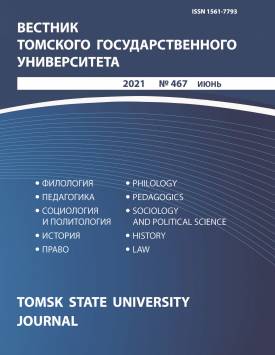Correction of Body Weight In Female Judokas Aged 14 to 16 in the Competitive Training Period
The article discusses rational nutrition and body mass correction which positively influence the working capacity and health of female judokas. The authors have chosen criteria-measuring tools for defining the subcutaneous thickness of all body components by identifying female judokas’ fat and muscle layers, percentage of muscle mass, water, required fat and stored fat, daily calorie consumption, initial level of theoretical knowledge, psycho-emotional state, physical, technical, and technical-tactical readiness, and competition results. According to the research data, the authors developed a model of forming the experience in body mass correction in female judokas aged 14 to 16. Thirty-two female judokas aged 14 to 16 took part in the pedagogical research. The female judokas were part of the national team of Russia. All research participants were divided into three experimental groups. Group 1 included athletes who did not correct their body mass. Group 2 included athletes who had 1-2% excessive body mass in the selected weight category. Group 3 included athletes with 3-5% excessive body mass. Each group had some subgroups according to weight categories. The pilot study revealed problem areas in the female judokas’ team: insufficient level of knowledge, skills of body mass correction for their independent application before competitions; decline in the psycho-emotional condition; insufficient level of speed-coordination abilities; typical mistakes in the technique and in technical-tactical motor actions. The proposed model is aimed at forming knowledge, skills, practical experience in body mass correction and improving special physical qualities and technical-tactical skills. The model includes three blocks: introductory diagnostic, substantive corrective, and resulting. The athletes trained during the competition period which consisted of three steps, four competition micro cycles and included theoretical physical training, technical training, and individual trajectories of body mass correction. The application of the proposed model increased the athletes’ experience in body mass correction, level of theoretical literacy, physical readiness, and improved their emotional and psychic tones before and after trainings, their standing throw technique, technical-tactical actions, and competition results.
Keywords
judo, highly qualified athletes’ training, model, body mass correction, typical mistakes, means and methods complexAuthors
| Name | Organization | |
| Kotova Tatiana G. | Tyumen State University | t.g.kotova@utmn.ru |
| Dmitrieva Svetlana V. | Tyumen State University | s.v.dmitrieva@utmn.ru |
| Rodina Irina V. | Center for Sports Training of Russian National Teams | irinarodina73@mail.ru |
References

Correction of Body Weight In Female Judokas Aged 14 to 16 in the Competitive Training Period | Vestnik Tomskogo gosudarstvennogo universiteta – Tomsk State University Journal. 2021. № 467. DOI: 10.17223/15617793/467/8
